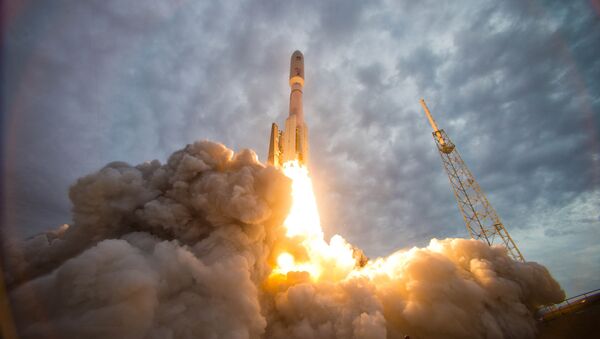The US' present reconnaissance satellites are huge, lumbering, expensive, ancient things. They cost upwards of a billion dollars and take a decade to develop, ensuring they're out of date by the time they even get launched. But the Blackjack program, spearheaded by the DoD's Defense Advanced Research Projects Agency (DARPA), could revolutionize the industry and make all that a thing of the past, Space.com reports.
In May, DARPA announced a three-phase contract program totalling $117.5 million to develop a set of cheap, lightweight satellites based on advances already made in the field by the commercial sector, Space News reported at the time.
SpaceX has already launched the first satellites of its Starlink satellite-internet service, predicted to become a constellation of thousands of small satellites in low-Earth orbit (LEO), around 620 miles above the Earth's surface. Starlink's goal is to "provide people in low to moderate population densities around the world with affordable high-speed internet access, including many who have never had internet access before," Tom Praderio, a SpaceX firmware engineer, told Space.com when the first satellites were launched in February.
DARPA hopes to have 20 prototype spy satellites in LEO by 2021, if it can reach the target price of $6 million per unit, project developer Paul Thomas told Space.com. Thomas said if all goes well, the US could have a 90-satellite constellation in operation by 2022.
Further, each unit will be small, likely weighing between 220 and 880 pounds, as compared to Boeing's most recent GPS satellite, the Block IIF series, which breaks the scales at 3,600 pounds, according to the company.
"The Blackjack approach assumes that we're not going to be an anchor tenant. We're not going to be driving these companies," Thomas said during a presentation with NASA's Future In-Space Operations (FISO) working group last week. "But we want to take advantage of that production line of spacecraft, the buses especially, that they're going to be building. We want to take advantage of that launch and take advantage of all of those pieces." A satellite bus is the infrastructure part of a spacecraft, a general model upon which multiple-production satellites are based.
Blackjack's satellites will be close to the Earth, too, just like the Starlink system it's building off of, operating in LEO instead of the distant 22,000 miles out that other GPS and spy satellites orbit at. At only 620 miles up, signal strength is 1,300 times stronger than in geostationary orbit, Thomas noted, meaning information gets up and back much, much faster.
While the actual duties of the satellites have not been elaborated upon, Space.com noted that the new satellite network will likely augment the US' missile detection and defense systems as well as global positioning navigation systems.
And because they're so cheap, they're easy to replace, meaning that the US won't get stuck using old, slow or obsolete hardware and software long past their ime times, simply because the cost of replacing them is too high. It also means that any losses to enemy attack, which the new Space Force branch of the military predicts is likely in future conflicts, won't be catastrophic or take years to replace.
DARPA has also contracted Lockheed Martin to produce another kind of microsatellite as well: the Segmented Planar Imaging Detector for Electro-Optical Reconnaissance (SPIDER), which sports a tiny, one-inch-wide sensor. Lockheed boasts the new unit will reduce the weight and size of a traditional space telescope by 90 percent by replacing large, bulky mirrors and lenses with a tiny array of lenses, Sputnik reported.



